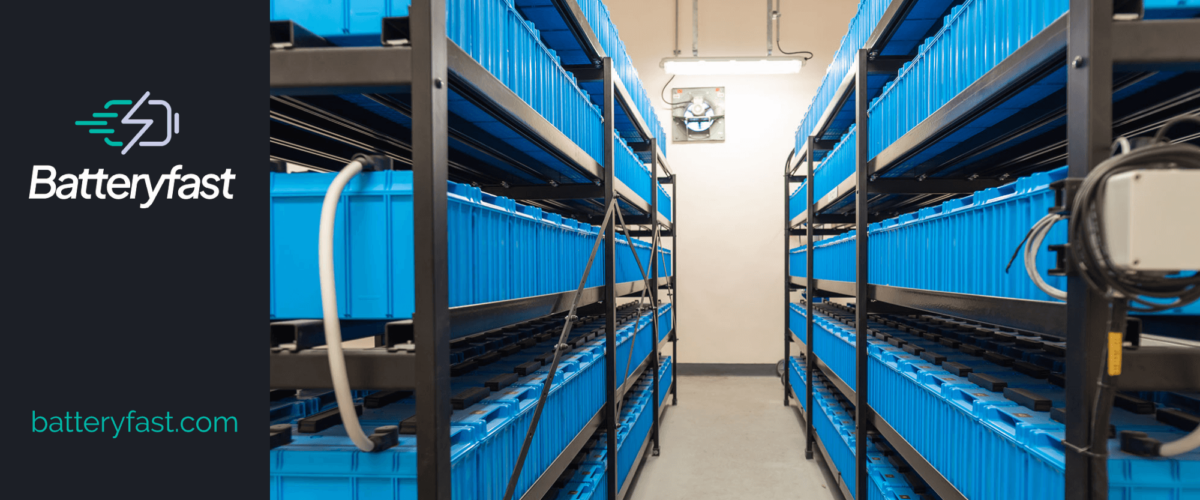History of Stationary Batteries
Stationary batteries were previously almost always lead acid. Size and weight is of lesser concern. The limited cycle count does not pose a major problem because the batteries are seldom deep discharged. Large stationary systems were mostly mature flooded systems that provide a reliable and economical service, but they needed regular maintenance in form of checking the electrolyte level and adding water. Automatic watering reduces some of this routine maintenance work.
Valve-regulated lead acid (VRLA) offers a lower-cost alternative to flooded lead acid. Being maintenance-free, the battery can be installed and forgotten. This benefit is often taken to the extreme in that the batteries are neglected. In the absence of adding water, maintenance comes in the form of checking the voltage, internal resistance and verifying capacity.
Flooded nickel-cadmium batteries are used in applications that need regular deep cycling or are exposed to hot and cold temperatures. NiCd for stationary applications is about four times the price of lead acid; however, the vendors say that improved longevity will make up for the higher cost. Flooded nickel-cadmium batteries are non-sintered and don’t have memory.
Battery manufacturers have introduced NiMH and Li-ion batteries for stationary uses. The advantages are wide temperature range and the ability to deep cycle and fast charge. These batteries have a small footprint, need minimal ventilation and have a long life. When storing energy from renewable sources, such as from solar cells, NiMH and Li-ion do not suffer from sulfation as lead acid does when not fully charged. Li-ion has the added benefit of being light. It can be made semi-portable for temporary systems and remote installations.
Grid Storage Batteries
Renewable energy sources such as wind and sun do not provide a steady stream of power, nor do they harmonize with user demand. Large energy storage batteries called load leveling or grid storage batteries are needed to provide a seamless service.
Storing energy when the demand is low is not new. Hydroelectric power stations use excess electricity to pump water back up to the reservoir at night for use the next day. With an efficiency factor of 70–85 percent, pumped hydro is easier to manage than adjusting the generators to the exact power need. Flywheels also serve as energy storage. Large electric motors spin up one-ton flywheels when excess energy is available to supply brief energy deficiencies. Flywheels are the most expensive energy storing media, followed by Li-ion. Pumping compressed air into underground cavities is another way to store energy, but load leveling batteries are the most practical for wind farms and solar installations.
Historically a wind turbine generates between 900kW and 2,300kW and a typical wind farm produced 30–300 megawatts (MW) in total. To get a better idea of electric mega-power, 1MW feeds 50 houses or a super Walmart store. A 30MW wind farm uses a storage battery of about 15MW. This is the equivalent of 20,000 starter batteries and costs about $10 million. Besides wattage, the battery industry also uses Volt-amps (VA) to specify battery capacity. Read more about Watts and Volt-amps.
Most energy storage batteries are lead acid; newer systems lower than 1MW include sodium-sulfur and Li-ion. The battery management system (BMS) keeps the battery at 50 percent charge to allow absorbing energy on wind gusts and delivering on high load demands. Modern BMS can switch from charge to discharge in less than a second. This helps stabilize the voltage on transmission lines.

